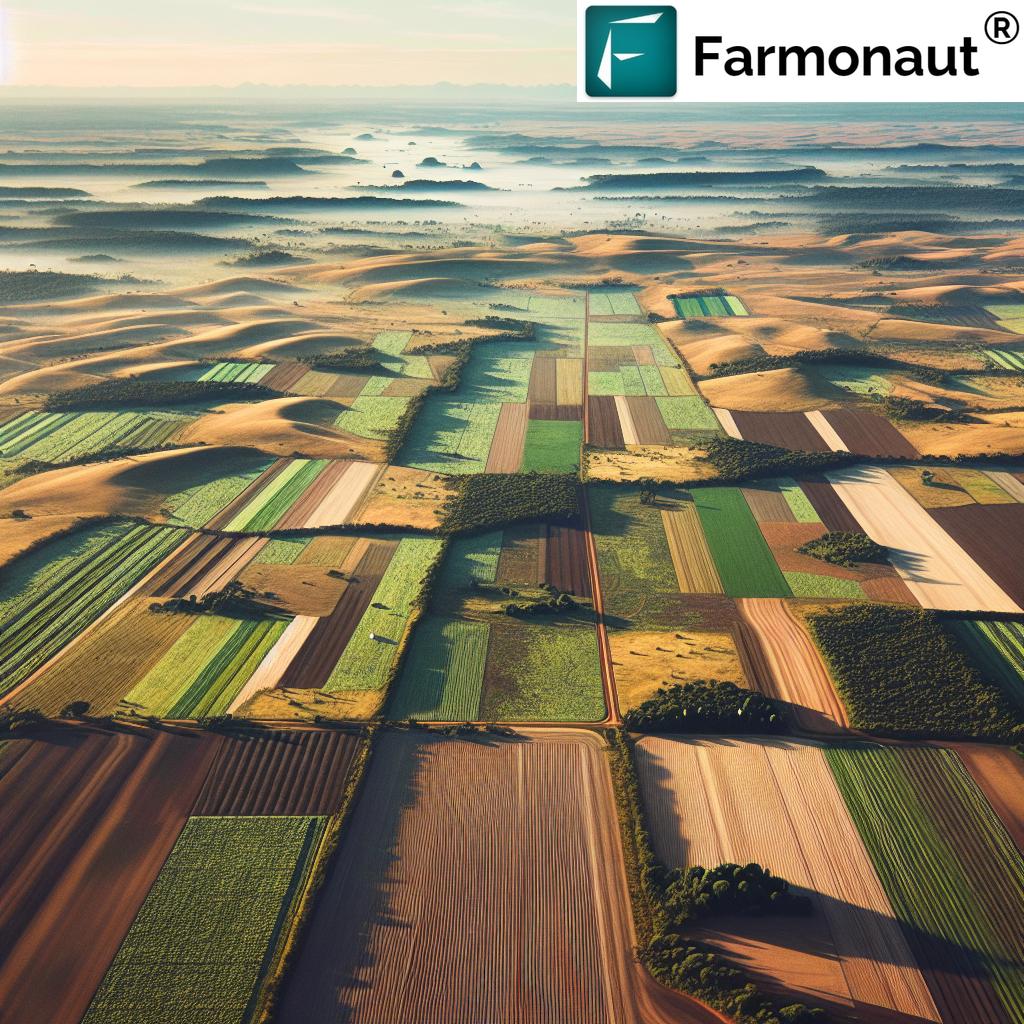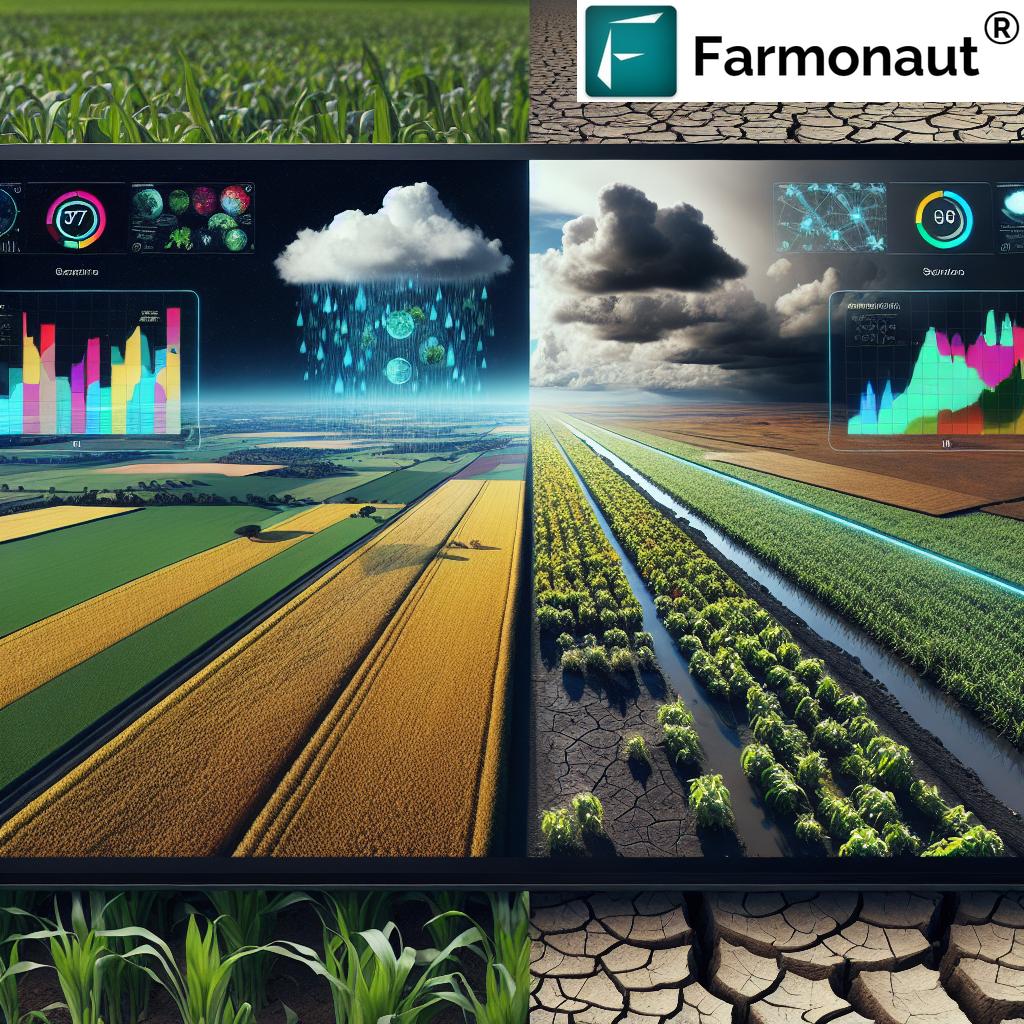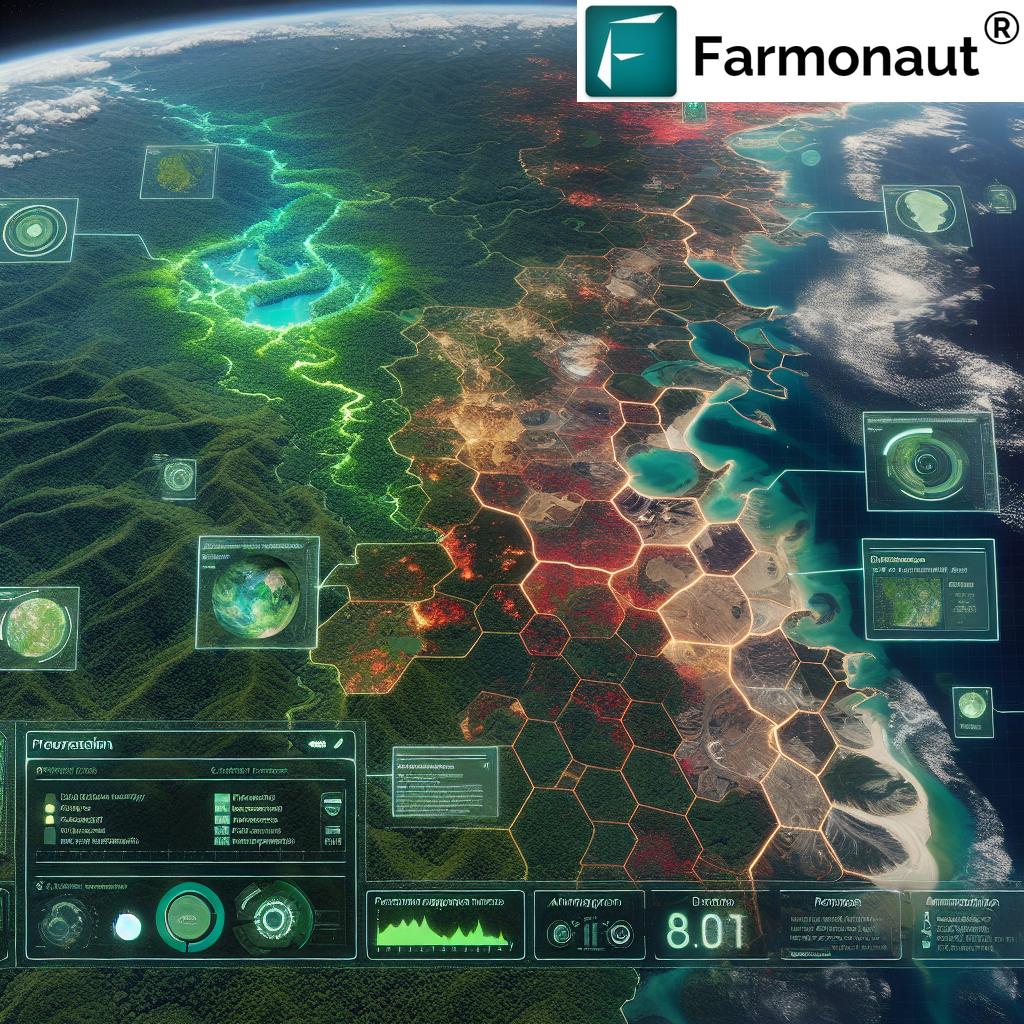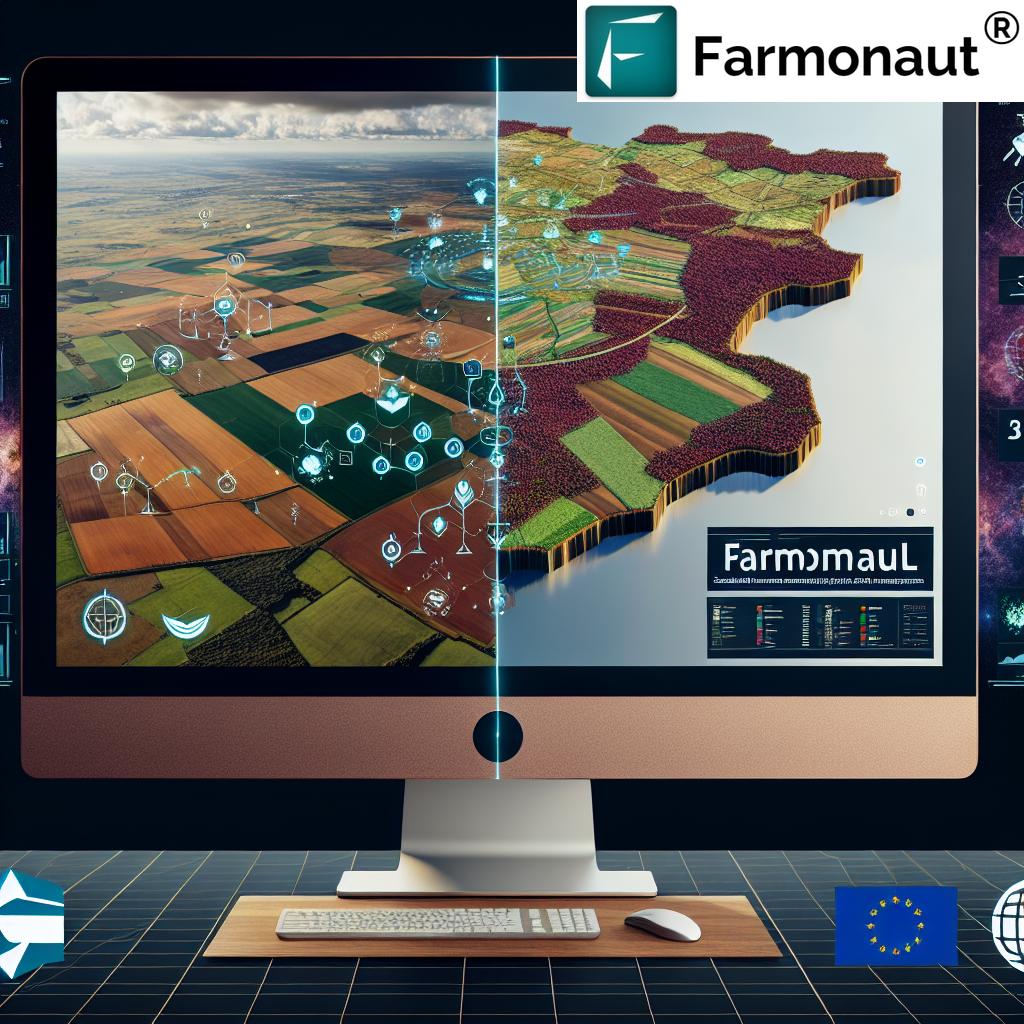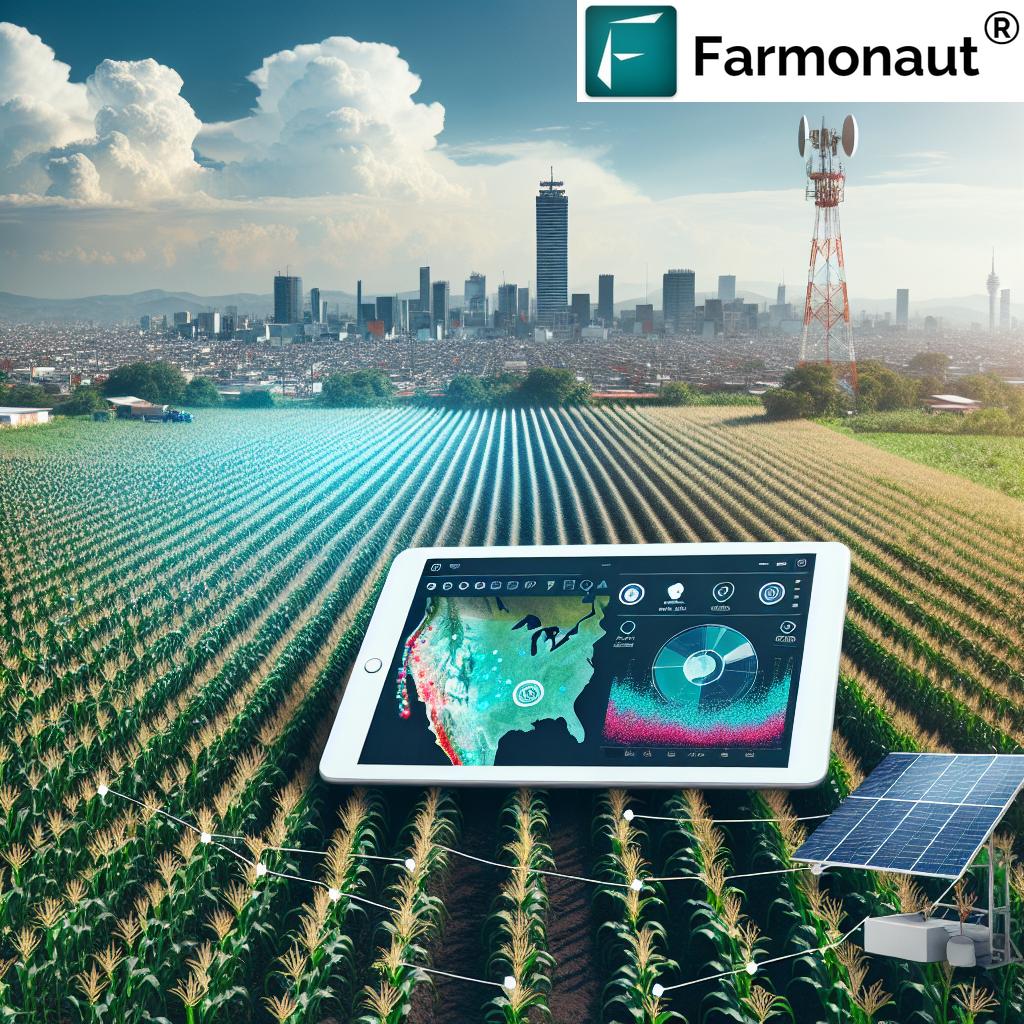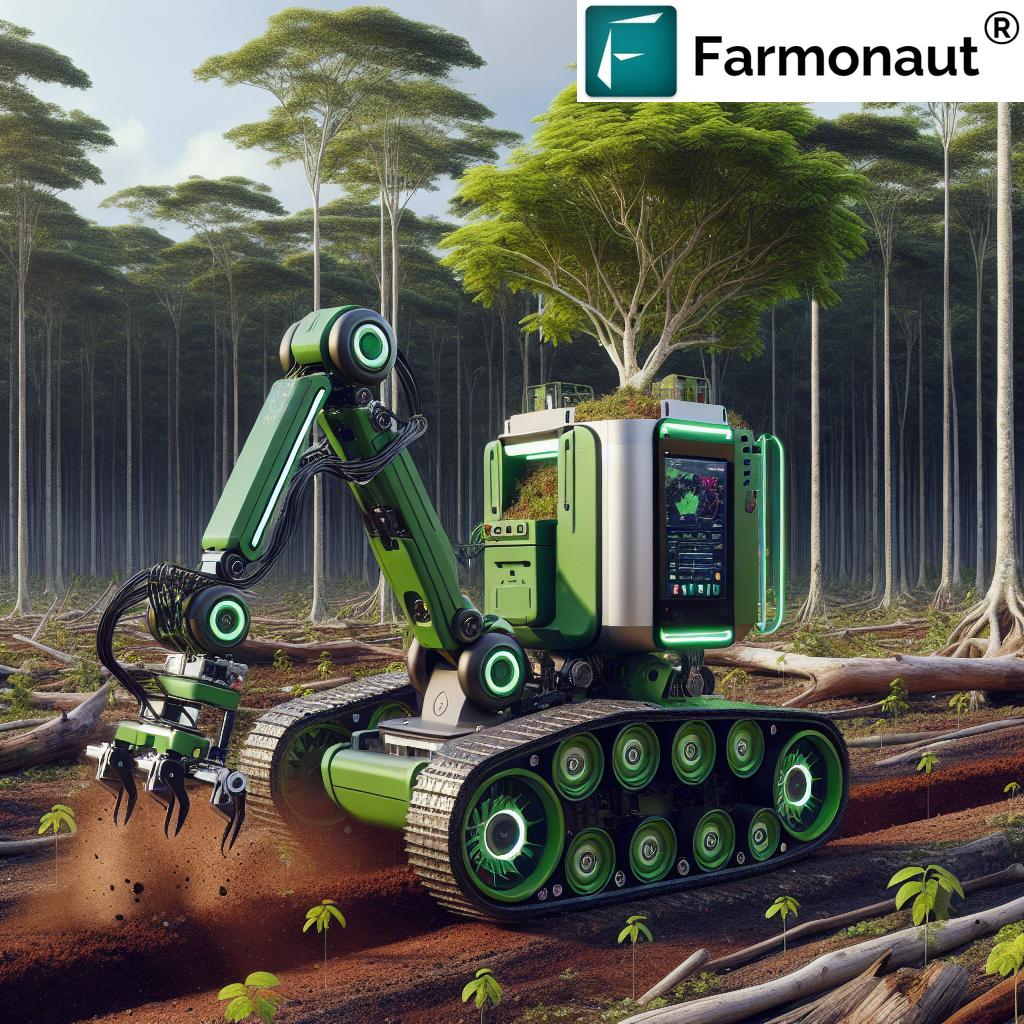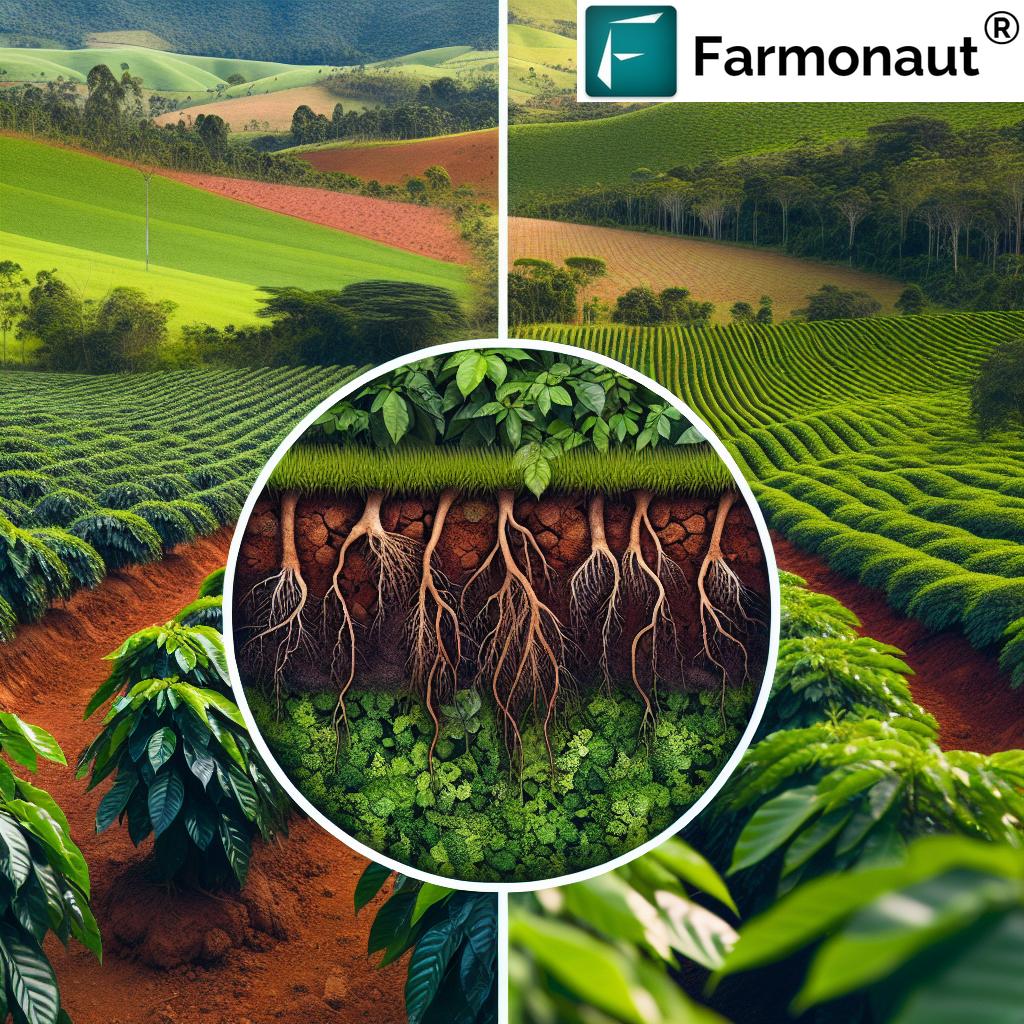No-Till Farming: 7 Shocking Benefits for South America
Table of Contents
- Introduction
- Quick Trivia: No-Till Superpowers
- Historical Context and the Rise of No-Till Farming
- What Is No-Till Farming?
- 7 Shocking Benefits of No-Till Farming in South America
- Comparison Table: No-Till vs. Conventional Tillage
- Farmonaut’s Role: Transforming Sustainable Agriculture
- No-Till Farming Challenges and Practical Solutions
- The Future of No-Till Farming in South America
- Frequently Asked Questions (FAQ)
- Conclusion
- Farmonaut: Affordable, Modern, Sustainable!
“No-till farming can reduce soil erosion by up to 90% compared to conventional tillage in South America.”
No-Till Farming: Transforming the Future of South American Agriculture
As we navigate the rapidly evolving landscape of sustainable agriculture, the concept of no-till farming stands out as a revolutionary practice with profound implications for our region. South America—home to vast agricultural lands in countries like Argentina, Brazil, Paraguay, and Uruguay—is at the forefront of adopting no-till and direct seeding methods. These practices are redefining how we approach soil health, water conservation, yields, and profitability, building resilience against climate uncertainties and environmental degradation.
In this in-depth guide, we’ll explore what makes no-till so game-changing, the science and economics behind it, the real-world benefits of no-till agriculture, and tips on how you can leverage platforms like Farmonaut to maximize sustainability and success on your own farm.
Historical Context and the Rise of No-Till Farming in South America
The context of no-till farming’s rise is rooted in crisis—and innovation. By the mid-20th century, the world witnessed rampant erosion and soil degradation as a result of intensive conventional tillage. In the United States, a pioneer in minimal tilling, nearly 40% of farms shifted to no-till or reduced-till by 2022 (Reuters).
But globally—and especially across South America—the uptake has been even more rapid and transformative. Argentina and Brazil are today recognized as no-till superpowers, both in scale and effectiveness.
- Argentina: Over 90% of cropland employs no-till, leading to better water infiltration, less wind erosion, and improved economic returns.
- Brazil: No-till has helped reclaim degraded soils, increase farm productivity, and solidify global leadership in commodity crops.
- Paraguay and Uruguay: Widespread adoption is fostering environmental regeneration and profitability.
Why this shift? Our collective lessons from the past point to the crucial role of soil protection, reduced fuel and labor usage, and long-term economic benefits. The enthusiasm for sustainable farming practices stems from both historical necessity and modern ecological awareness.
What Is No-Till Farming? Direct Seeding Methods Explained
No-till farming—sometimes called zero-till or direct seeding—is the agricultural practice of planting seeds straight into undisturbed soil without any prior mechanical tillage (plowing, harrowing, or turning). The field is left largely intact. Crop residues from the previous season (stalks, straw, leaves) are left on the surface as protective mulch.
- Specialized seeding equipment slices a narrow strip in the residue and places the new seeds at the correct depth.
- The system preserves natural soil structure, reduces physical soil disturbance, and minimizes erosion.
- This approach enhances soil health, supports water retention in farming, and creates a favorable microbial environment for root growth and nutrient cycling.
These methods have surged in popularity in the past few decades, especially in environmentally sensitive regions like South America. Farmers are adopting no-till not just for soil but for climate, economic, and community resilience.
7 Shocking Benefits of No-Till Farming in South America
1. Soil Health Improvement: Building Resilient Agroecosystems
No-till farming supports soil health improvement by maintaining natural structure, enhancing infiltration and aggregate stability. The undisturbed environment allows earthworms, microbes, and beneficial fungi to thrive, boosting nutrient cycling and promoting robust crop root growth. Over time, organic matter increases, leading to richer, more fertile land with superior resilience to disease, drought, and compaction.
- No-till soils are less prone to crusting, which means better seedling emergence and healthier crops.
- Maintaining residues on the surface protects against rapid changes in moisture and temperature, creating a balanced environment for soil life.
Studies in Argentina and Brazil consistently show higher organic matter levels and improved microbial diversity in no-till compared to conventional tilled fields (Enviroliteracy).
2. Reduced Soil Erosion: Safeguarding Our Land
Perhaps the most dramatic benefit of no-till is the reduction of soil erosion—by wind and water runoff. The continuous cover of crop residues acts as a protective layer on the field’s surface, absorbing the impact of rainfall and slowing the velocity of wind.
- Nationwide, soil erosion reduction by more than 80-90% has been documented in South American regions post adoption.
- This not only keeps precious soil in place but also drastically improves water quality by preventing polluted runoff.
- Maintaining ground cover is a simple yet profoundly effective sustainable farming practice—crucial for long-term food security.
Erosion is THE cornerstone issue that no-till solves. For South America’s sloped, rain-prone farmlands, the switch means less topsoil loss and greater long-term productivity.
“South American no-till farms report up to 20% higher water retention, improving crop resilience during droughts.”
3. Water Retention in Farming: A Drought Defense Mechanism
Did you know that water retention is one of the most valuable outcomes of no-till practices? By leaving residues and not disturbing the soil structure, moisture is conserved for longer timeframes. This key benefit is especially vital in Brazil, Argentina, and Paraguay—where dry spells and irregular rainfall increasingly threaten crop yields.
- Improved soil aggregation and porosity allow for rapid infiltration and storage of rainfall—less is lost to evaporation or surface runoff.
- Fields absorb more from every rain event, helping crops withstand seasonal and climate-driven droughts.
- Studies suggest up to 20% more water retention in no-till South American farms compared to conventional fields (USDA Climate Hubs).
These traits combine to boost crop resilience and ensure stable yields season after season.
4. Environmental Impact: Climate, Carbon, and Conservation
- Carbon Sequestration: By keeping fields undisturbed and building organic matter, no-till systems increase the soil’s ability to store atmospheric carbon (carbon sequestration), helping reduce overall emissions.
- Reduced Greenhouse Gas Emissions: Less tillage means less fuel burned by heavy equipment. This simple switch results in lower on-farm carbon footprints.
- Biodiversity Boost: No-till fields create a rich ecosystem, supporting beneficial insects, birds, and pollinators within crop residues and organic matter. These living systems help balance pests and promote natural planting cycles.
The result—especially when combined with Farmonaut’s advanced carbon footprint tracking tools—is a regenerative approach that brings both local and global environmental benefits.
Reducing the emission intensity of agriculture, while storing more carbon in our soils, is a cornerstone of future-facing sustainability strategies for South America.
5. Economic Benefits of No-Till Farming: Profitability and Labor Savings
- Significant Cost Savings: Eliminating tillage operations means less fuel consumption, equipment wear, and labor per crop cycle—improving net profit margins for farmers across Argentina, Brazil, and Paraguay.
- Reduced Investment: Once the right equipment is in place (such as no-till drills), annual operational costs drop significantly.
- Labor Efficiency: Fewer field passes reduce not only labor time but also soil compaction risk (critical in large-scale South American farms).
- Optimized Fleet & Resource Management: Using tools like Farmonaut’s satellite-based fleet resource management, producers can plan operations for minimal soil disturbance and maximal time and fuel savings.
In the US, no-till saved over 812 million gallons of fuel in a single year, and similar proportional savings are evident across South American regions.
In short: Spend less, do more—the economic advantages are clear.
6. Enhanced Crop Yields: Productivity in Every Hectare
Improved soil health, increased water retention, and more stable surface conditions drive higher and more resilient yields.
- Argentina’s leading producers see yields rise because robust soils and precise nutrient cycling support healthier, faster-growing crops.
- Resilient soils mean less impact from weather anomalies—yields remain consistent or even increase during dry years.
- When supported by Farmonaut’s real-time crop health monitoring, these gains are enhanced by tailored advisory and before-it’s-too-late management interventions.
Ultimately, yields are not just higher, they are more reliable—one of the greatest values for food security in South America’s dynamic and competitive agricultural landscape.
7. Supply Chain Transparency & Market Access
As consumers and regulators demand greater proof of sustainable farming practices, traceability and supply chain integrity become non-negotiable.
Farmonaut’s blockchain-powered traceability solutions allow producers to demonstrate environmental compliance, ensure product authenticity, and meet the requirements of premium international markets for South American grain, oilseeds, and more.
- This new transparency fosters trust, reduces fraud, and opens doors to sustainability-linked incentives and export opportunities.
By leveraging no-till and digital tools, South American agricultural community can lead in both sustainability and commerce.
Comparison Table: No-Till vs. Conventional Tillage in South America
| Benefit | Conventional Tillage (Estimated Value) | No-Till Farming (Estimated Value) | Improvement (%) |
|---|---|---|---|
| Soil Organic Matter (%) | 1.2-2.0 | 2.5-3.5 | +75% |
| Water Retention (mm) | 100–120 | 120–145 | +20% |
| Crop Yield (kg/ha) | 3,000–5,000 | 3,300–6,200 | +10–20% |
| Soil Erosion Reduction (%) | Baseline (0%) | 80-90 | Up to 90 |
| Input Costs ($/ha) | $300–$350 | $220–$280 | −20% |
| Carbon Emissions (kg CO₂/ha) | 550–700 | 350–400 | −40% |
| Biodiversity Index | Low | Medium to High | Increased |
Farmonaut’s Role: Transforming Sustainable Agriculture in South America
Our journey toward sustainable farming practices is catalyzed by data, precision, and technology. As Farmonaut, we are committed to empowering the South American agricultural community with next-gen, affordable digital tools that make no-till farming more measurable and manageable than ever before.
- Satellite-Based Crop Monitoring: Instantly access real-time vegetation health (NDVI), soil moisture, and crop stress metrics. Make smarter irrigation, fertilization, and pest management strategies for optimal crop yields, while minimizing waste.
- AI Advisory: Our Jeevn AI delivers customized, instant advice to farmers on everything from crop residue management to weather-based scheduling—helping you optimize the practice of no-till with actionable insights.
- Blockchain-Based Traceability: Secure every step of the grain’s journey from field to market—demonstrate sustainability and win premium buyers via product traceability.
- Resource Management Tools: Whether you’re running large-scale or smallholder operations, simple dashboards for equipment, tractor, and vehicle fleet management keep your logistics sharp and costs low.
- Carbon Footprint Calculation: Instantly audit your emissions and carbon sequestration, report progress, and unlock support with our carbon footprinting platform.
Our platform is available as a web app, android/iOS mobile app, and API for enterprise or integration (see API details and developer docs).
The result? No expensive hardware needed: just better decisions, more sustainability, and more profits—regardless of your farm size or location.
From large-scale management in Brazil to rapidly growing opportunities on smaller plots in Paraguay, Farmonaut adapts to your vision.
No-Till Farming Challenges and Practical Solutions
Despite the major environmental and economic advantages, transitioning to no-till farming in South America isn’t without its challenges. Here are key obstacles and what we, as a farming community, can do:
- Initial Equipment Investment: Specialized no-till drills are required to properly deposit seeds among residues. While these investments may seem daunting, long-term fuel, labor, and input savings outweigh upfront costs. Mechanism sharing and farm cooperatives can help spread investment risks in remote regions.
-
Weed Management: Without tillage, weeds can multiply. Strong management requires:
- Smart herbicide application (with environmental care)
- Strategic crop rotation and use of cover crops
- Integration of data-driven scouting—Farmonaut’s satellite monitoring helps identify weed hotspots quickly
-
Pest & Disease Control: Accumulated plant residues create winter shelters for some pests. Mitigate risk via:
- Regular monitoring, and targeted biological/pesticide interventions
- Crop rotation to disrupt pest lifecycles
- Deploying integrated pest management (IPM) strategies
-
Soil Compaction: Continuous no-till on heavy soils and with repeated vehicular traffic may lead to compaction. Solutions include restricting heavy equipment use to certain field tracks,
and growing deep-rooted cover crops to naturally loosen the soil.
Challenges are real—but they are surmountable, especially with tech-driven management, local education, and our shared spirit of innovation!
The Future of No-Till Farming in South America
The outlook for no-till farming in South America is incredibly positive. We are at the cusp of a new era in agricultural methods, supported by:
- Advanced Research: Universities and agtech companies, including Farmonaut, are investigating even more sophisticated approaches for cover crops, nutrient cycling, and regionalized adaptations.
- Policy Support: Governments incentivize sustainable practices with grants, technical assistance, and infrastructure support, encouraging the adoption of no-till systems.
- Global Markets: Exporters are rewarded for adopting sustainable systems—especially in premium markets requiring traceability.
- Technology Access: Through platforms like Farmonaut, even smallholder farmers gain affordable access to precision agriculture, maximizing both environmental and economic outcomes.
- Community-Driven Learning: Knowledge-sharing, collective innovation, and local integration of best practices will ensure long-term success.
With technology, education, and the will to innovate, no-till farming will set new standards for agriculture—not only in Argentina, Brazil, Paraguay, and Uruguay, but throughout the global South.
Farmonaut: Affordable, Modern, Sustainable!
We believe that every farmer and agribusiness deserves access to actionable insights, whether managing large fields in Brazil or adapting new methods in Paraguay.
Our subscriptions range from individual plot monitoring to large-scale enterprise solutions—via web, mobile, and API.
Pick what fits your dream of a greener, smarter farming future.
No-Till Farming in South America – Frequently Asked Questions (FAQ)
What is the meaning of no-till farming?
No-till farming (or direct seeding) is an agricultural practice where seeds are planted straight into undisturbed soil and previous crop residues remain on the field surface. This method eliminates the need for conventional tillage, preserving soil structure, improving water retention, and supporting biodiversity.
What are the environmental benefits of no-till agriculture?
- Soil health improvement via undisturbed conditions and more organic matter
- Reduced soil erosion (up to 90%) due to residue cover
- Better water retention and drought resilience
- Carbon sequestration (storage of CO₂ in soil)
- Biodiversity increase in microbes, insects, and beneficial wildlife
How does no-till farming save costs and fuel?
No-till reduces the number of tractor passes, eliminating the need for plowing and harrowing, thus saving on fuel, labor, and machinery wear. Over time, these savings can amount to hundreds of dollars per hectare each year, making it one of the most economically beneficial systems for South American farmers.
Is no-till farming suitable for all crops?
No-till is widely used for grains (soybeans, maize, wheat) in South America. It is effective for many, but not all, crops. The success of no-till with vegetable crops or in certain heavy clay soils can be region-specific and may require adaptations such as cover cropping or new equipment types.
What technologies support no-till adoption and management?
Farmonaut’s satellite-based crop health monitoring, AI advisory systems, blockchain traceability, and resource management tools all support planning and continuous improvement for no-till practitioners. These tools deliver real-time insights for improved yields, sustainability, and compliance.
What are common challenges with no-till farming?
- Initial equipment costs (solved with co-ops or financial planning)
- Weed and pest management (addressed through rotation, cover crops, and data monitoring)
- Potential for soil compaction (managed by careful traffic patterns and deep-rooted plants)
How can Farmonaut help my South American farm transition to no-till?
Farmonaut offers precision agriculture solutions—from remote crop and soil monitoring to blockchain traceability and carbon footprinting. Our accessible apps and dashboards provide actionable, location-specific insights, helping with transition planning, risk management, and agricultural optimization.
Combine this with our crop loan and insurance analysis capabilities for risk-averse, data-driven farming.
Conclusion: Investing in Our Future, One Field at a Time
No-till farming, led by the pioneering spirit of Argentina, Brazil, Paraguay, and Uruguay, is transforming South America into a hub of sustainable, high-yield, digitally empowered agriculture. As a community, by leveraging the proven environmental and economic benefits of no-till agriculture—from soil health improvement and water conservation to labor efficiency, cost savings, and supply chain transparency—we secure a resilient, profitable, and regenerative future.
The key is not only the method, but smart application. By embracing modern technologies—like Farmonaut’s satellite-based, AI-driven platforms—and sharing best practices, our soils will thrive, our families will prosper, and South America will continue to feed the world.
Ready for climate-smart, future-proof farming? Join the no-till revolution!
Empower your land. Empower your future. Choose No-Till, Choose Farmonaut.


